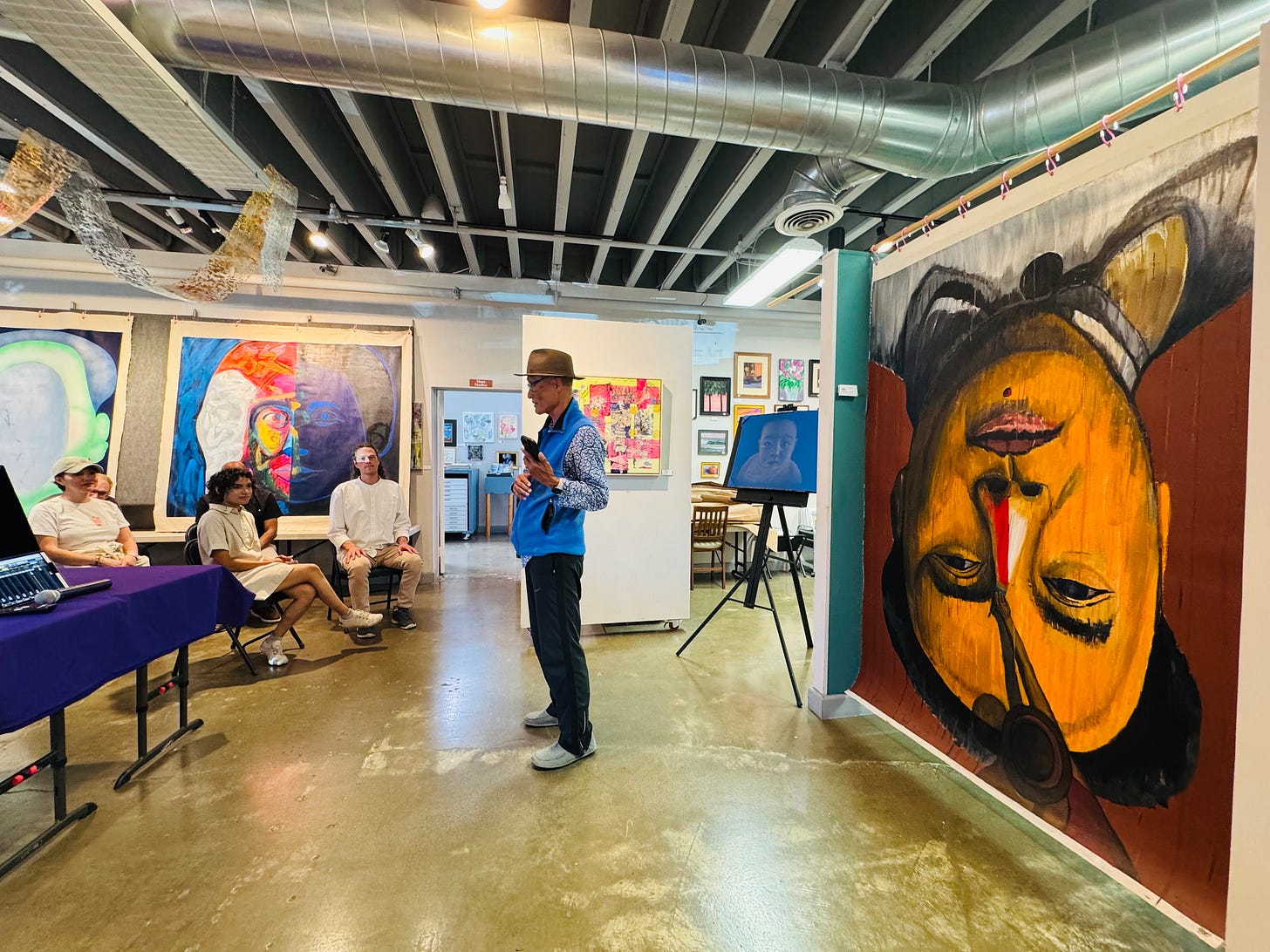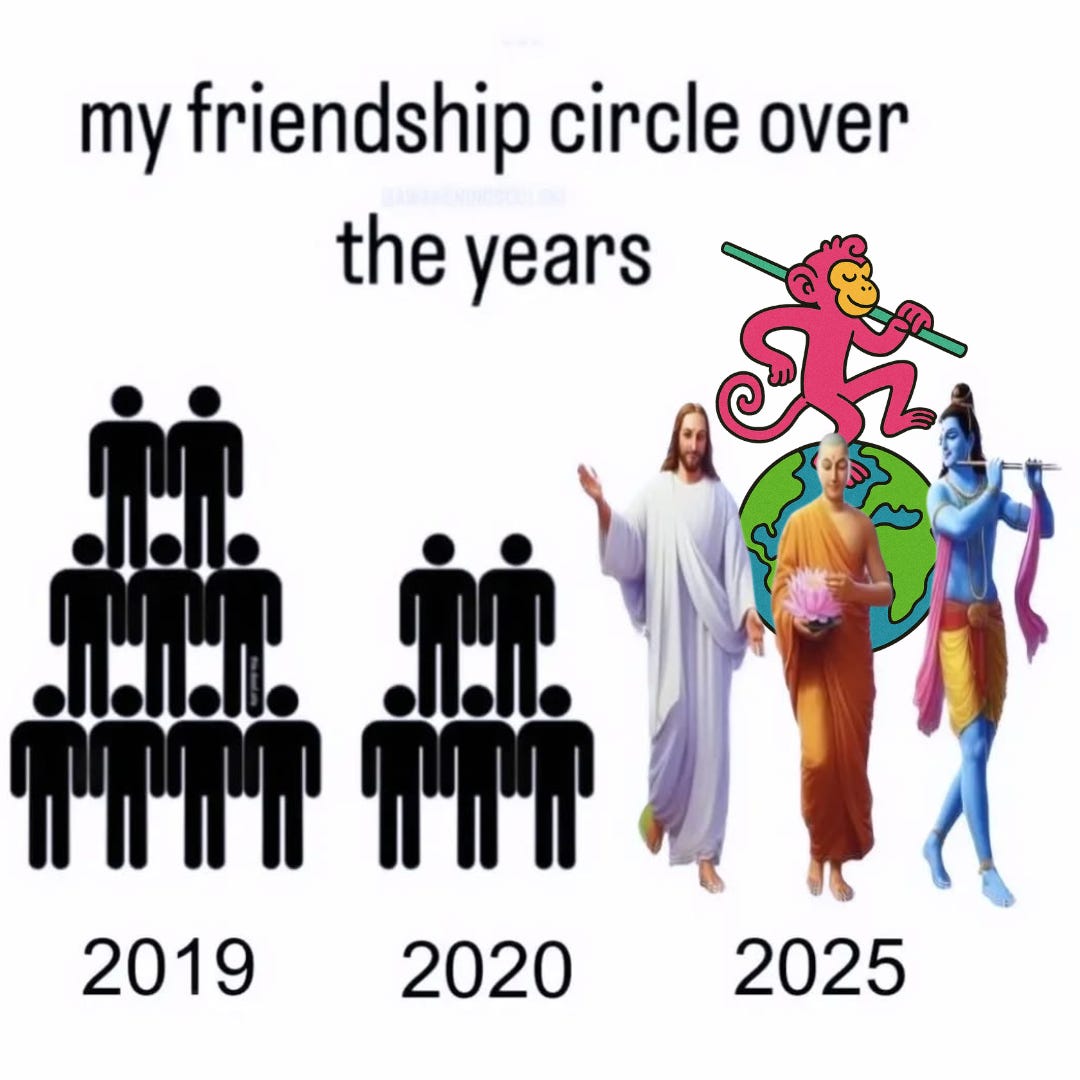The Fool’s Guide to Risk
Not taking a risk is a risk. Some leaps aren’t about success—they’re about trusting the path of healing, even when it makes you look like a fool.
A student asked me earlier this week how I found the courage to make so many leaps—from activism to real estate, finance, reimagining the Los Angeles River and beyond.
I told her something I wish someone had told me earlier: not taking a risk is a risk.
We like to imagine safety as neutral. That waiting until the timing is better—more money, more experience, more stability—will somehow make the leap easier.
But the longer we wait, the heavier our lives get with things we’re afraid to lose.
Here’s the heart of it: courage isn’t about fearlessness; it’s about our relationship to the unknown. Risk is another word for aliveness. Every leap I’ve taken—career, creative, spiritual—has asked me to trade the comfort of certainty for the pulse of possibility, and to trust that what looks like (and often feels like) loss is often the making of a new self.
On Monday, I was speaking to college students studying urban ag. They wanted to know how to align their passion for farming with the reality of making a living.
I told them my own path has been anything but linear: organizing protests in college, then working in real estate finance, then collaborating with Frank Gehry on the Los Angeles River and then building a gratitude ecosystem. From activism to development to design—it sounds strategic in hindsight. It wasn’t. It was just learning to follow what felt alive.
My strategic mind has always held three things in balance—money, design, and politics—and like any good recipe: you need all three.
Money brings resources.
Politics brings people.
Design brings imagination.
But the secret ingredient is the idea itself. That’s your reason for being. Without an idea worth feeding, organizing, and funding, the rest is just machinery.
Still, the question underneath their question was one I know well: How do you find the courage to change direction when everyone around you is optimizing for certainty?
Frank Gehry once told me,
“Design is best when you don’t know where something’s going to go.”
That line has stayed with me. It’s the same with life: if you already know where it’s going, it’s probably not worth doing. Some might argue that we know what’s at the ultimate end, so why hurry to it?
Early in our collaboration, I remember presenting a strategy to align the politics and resources needed to move our plans forward. Frank looked at me and asked, “So what’s your plan B?”
For a split second, my mind raced. Oh shit. This is a trust-building moment.
We were in his office surrounded by art, models, and awards, with three other partners in the studio loft. I couldn’t just BS an answer.
So I told him the truth:
“Plan B is to make Plan A work.”
He smiled and said, “Okay, let’s make that happen then.” And we all laughed.
It was one of those moments where faith and stubbornness shake hands. You don’t need a backup plan when you’re fully committed to the one that feels alive.
I told the students that risk-taking isn’t about being reckless, but it does often require leaps of faith.
Not faith as dogma, but as trust.
Trust that your ideas are alive for a reason.
Trust that uncertainty isn’t an enemy but an initiation.
Trust that you are your best teacher.
That same instinct guides nature: a seed cracks open not because it wants to die, but because it’s time to grow.
Recently, I went to a gallery showing with the artist Tu2, now in his seventies, showing work that spans three decades. He spoke about how he once flirted with fame but ultimately chose to focus on healing.
He stood before one of his early Mao portraits—painted upside down, a gesture that carries layered meaning in Chinese tradition. During the Lunar New Year, people often hang the character fú (福, meaning “fortune”) upside down because the word for “upside down” (dào) sounds like “to arrive.” The inversion becomes a kind of blessing—fortune has arrived.
Tu2’s choice landed like that for me: an act of faith disguised as irreverance. To turn Mao—an icon of control—upside down is to invite a different kind of power to arrive, one rooted in healing rather than domination.
When I asked what advice he’d give his forty-year-old self who painted this, he reflected,
Fame would have caused me more personal violence. Trust the path of healing.
That line resonated. We can chase visibility as proof that our risks are worth it. But sometimes the real risk is healing quietly, without applause.
It takes courage to be the fool—open, unarmored, willing to stumble forward with curiosity instead of certainty.
Because you can’t take this journey too seriously.
As serious as life can be, the Trickster keeps reminding us: the fool is the only one who can laugh and still keep walking toward the unknown.
🌀 Meme of the Week
“My friendship circle over the years”
Maybe this is what happens when you keep taking leaps of faith—your circle expands beyond certainty and into mystery.
When you stop playing it safe, you don’t lose friends; you just start hanging out with bigger archetypes. 🕊️✨
And if you look closely, you’ll see the Trickster made it into the pantheon too—Monkey King on top of the world, reminding us that play might just be the highest form of devotion. 🐒🌍
What leap—or small act of foolish faith—is life asking you to take next?
Until the next jump,
Omar 🐒



